
Looking for books to read that will not only keep your reading habit alive, but also educate you in a host of different, essential skills? This is the right place for you! Host, Nathan Shields, talk about some important books that have influenced the Physical Therapy Owners Club for the better. A good leader is a leader that keeps their mind open, and one of the most productive ways to keep the mind alive is to read. Check out these helpful and empowering titles today!
—
Listen to the podcast here:
Influential Books Of The Past Year
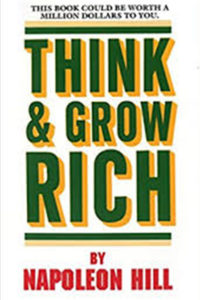
To start off the New Year, I want to look back at some of the more influential books of the Physical Therapy Owner’s Club from 2019. Back in 2018, I mentioned a number of books and reviewed those, but I wanted to get into some of the books that were influential to me in 2019 and at least share those with you. Some of those were references back to books that I’d mentioned before and reread, but there are plenty of new ones as well. The books that I reviewed in 2018 included Good To Great by Jim Collins, The E-Myth Revisited, Michael Gerber, Think and Grow Rich Napoleon Hill, Mastering the Rockefeller Habits and Scaling Up by Verne Harnish, Rich Dad Poor Dad by Robert Kiyosaki and The 7 Habits Of Highly Successful People by Stephen R. Covey, some of the more basic fundamental small business or entrepreneurial books out there. If you haven’t read them, I highly recommend it.
Some of those I reread including Rich Dad Poor Dad reference back to that again, including The Cash Quadrant by Robert Kiyosaki. I reread E-Myth Revisited. I also re-read parts of The 4-Hour Workweek by Tim Ferriss. Some of the newer books that I’ve read and I wanted to talk a little bit about included Building a StoryBrand by Donald Miller, The Coaching Habit by Michael Bungay Stanier, Change Your Questions, Change Your Life by Marilee Adams. A book that I got halfway through, I didn’t completely finish was Profit First by Mike Michalowicz.
Building A StoryBrand By Donald Miller
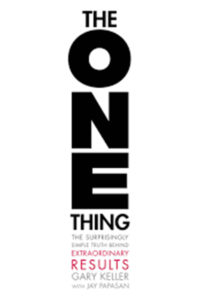
To review some of the newer ones, I’ll start with Building a StoryBrand because this was influential to me as I’ve started my coaching business and wanted to build out on my brand. Building a StoryBrand by Donald Miller is all about building your brand and also developing the marketing content in order to engage and attract more customers. It starts with laying out what Donald Miller considers the essence or the elements of any successful story. In doing so, it takes you along the path of developing your brand and creating the most engaging marketing content.
Donald Miller spells it out like this. Every story in a nutshell essentially has a character who wants something and encounters a problem before they can get it. There are two parts right there, the character and the problem. At the peak of their despair, a guide steps into their lives, step number three, gives them a plan, step number four and calls them to action, number five. That action helps them avoid failure and ends in success, the sixth and seventh elements. There’s a seven-step process, not only to any successful story but also to our marketing.
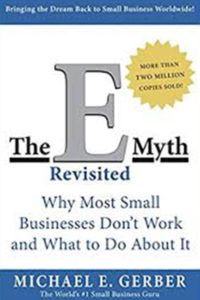
Following the sequence is what keeps the audience, namely our customers engaged and wants to reach out and buy. This is how we should market to our customers. This is how Building A StoryBrand flipped in my perspective. Unfortunately, as PTs, we sometimes see ourselves as the saviors, the heroes or the main characters in the story when we go about developing our marketing content. We ride in our white horse. We heal everybody that we touch on and we’re the hero.
We aren’t the hero. We could be but consider this, our marketing typically demonstrates that we are the best, that we have the best. We only use PTs. We have all the letters behind our names. We have the newest treatments and that we will essentially save you. Our best marketing efforts shouldn’t put us as the hero. The way Donald Miller puts it exactly on page 30, and this is what flipped my perspective and this hit me with a ton of bricks, is that the customer is the hero of the story, not your brand.
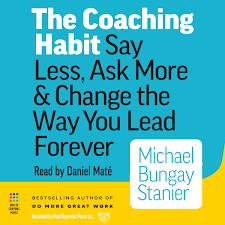
When we position our customer as the hero and ourselves as the guide, we will be recognized as a trusted resource to help them overcome their challenges. Our best marketing efforts should not put us as the hero. What the patients want is the guide to help them overcome their problems and they are the hero of their own story. They want to know what we have to offer, where we’re located, etc., but our marketing content should set us up as the guide to help them overcome their problems and lead them to success or avoid failure.
As I went through the Building A Storybrand process myself and the cool thing about is they have this free online worksheet to help you work out your content after each chapter that you read. I developed my messaging for my coaching and podcast website going through the process changed my focus. A lot of it was focused on stability and freedom. If you’ve listened to my intros in the past, now I’m more focused on freedom and profits. I’m hoping that resonates, but it also simply changed how I look at my content to ensure that I’m setting myself up as the guide and not necessarily the hero.
The Coaching Habit By Michael Stanier
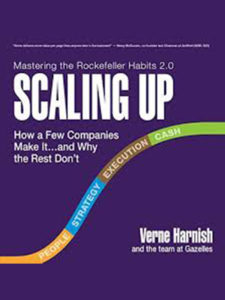
The next book that I got a lot from is called The Coaching Habit by Michael Bungay Stanier. As I’m setting myself up as a business coach, I found this to be super helpful. I found this in my own practice, as we built bigger and bigger teams, we find ourselves doing more and more coaching to help our teammates achieve their goals or simply to hold them accountable and walk them through issues that they have. I wasn’t treating patients all the time and I wasn’t simply developing policies and procedures all the time. There were a lot of times where it needed one-on-one meetings. Since we aren’t typically trained to be coaches and counselors, it can put us in an uncomfortable position or at least put us in a place of uncertainty as to how to proceed without it becoming a therapy session and not the physical therapy kind.
The Coaching Habit lays out seven standard questions to follow. If you use the first three over and over again, you’d get the desired effect and they allude to that. It helps you develop good coaching or listening habits in order to make your meetings more beneficial for your colleagues and sets you up as a leader. I’ll go through a few of these, not all seven, but I’ll go through the first three because they’re the most important and then I’ll share a little bit after that.
Develop good coaching and listening habits to make meetings more beneficial for your teammates. Click To TweetThe first question in some of these meetings should be essentially this, “What’s on your mind?” This question alone opens up things for the person to discuss those things that are most important to them at that time. It is focused as if to say, “What matters most to you at this time?” Question number one, “What’s on your mind?” Question number two, “What else?” We all have the tendency after they come up with their issues after question number one to give advice especially if we have the answer. The whole purpose behind coaching is not to necessarily give advice all the time and have all the answers. It’s to help them come up with their own solutions.
The second question, “What else?” keeps you from jumping in too quickly to the point where we may be giving solutions when we aren’t even certain of what the problem is. What else helps us stay curious and buys time to consider what’s going on and also helps us dive a little bit deeper into what else might be going on in their lives that’s leading to any of the issues that they have. The second question also leads then to question number three, “What’s the real challenge here for you?” This helps the person and informs you what’s going on. You may have a good idea, but until they verbalize what’s going on and maybe with the help of some clarifying questions, you can’t be certain what their true issue is.
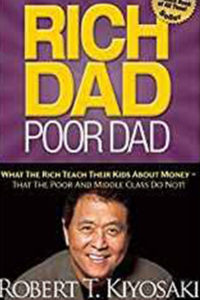
This question helps them get to the heart of the problem so you can help them. I’ve been trained in variations of these questions in the past, in some of my trainings, and I’ve even mentioned this on social media, a simple meeting could consist of three questions, “What are you working on right now? What do you need from me? This is what I need from you.” These first three questions are somewhat like that. In fact, I would add one more question to it. If you’re going to do an abbreviated coaching session, and this is question number five on their list, “What do you want from me?” “What’s on your mind? What else? What’s the real challenge for you? What do you want from me?” It’s going to be a super powerful question for both people in the room.
The person has a chance to put towards exactly what they want or need and overcome their issue. Verbalizing it, and you as a leader can become very clear about what you can do to help them if you can help them or not. It keeps the colleague in a position of power to overcome any of the problems that they have and puts you in a position of trusted support and guide without taking their problems upon yourself personally. There are a number of other tips in the book that help you develop the habits of a coach such as listening, being okay with silence and how to avoid the use of why questions. The Coaching Habit is huge especially as you becoming a leader of your team.
Your business will work according to what you demand from it. Click To TweetThe next book that was helpful to me was Change Your Questions, Change Your Life. I’m not going to get into it too much like I did the previous two books here. A lot of what this book revolved around was what’s called the choice map. The choice map shows two paths that we can take whenever we encounter any task challenge or circumstance, one path leading to positive responses and interactions called the learner path and the other one leading to negative responses in interactions called the judger path.
When we find ourselves on the judger path, we end up looking for fault, blame and others or even talking negatively about ourselves in a win-lose scenario, typically emotionally-based. When we follow the learner path, we continue to stay curious about our reactions almost stepping out of ourselves to look at what’s going on both within us and within the situation itself. On the learner path, we question our assumptions. We consider the facts and the history and consider what’s best for others in order to get a win-win scenario compared to the win-lose scenario on the judger path. This path tends to be more logic-based and searching what is best for you and the person that you’re working with.
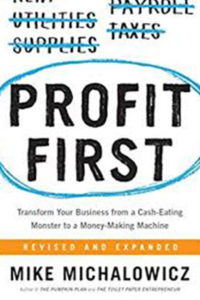
Considering the rollercoaster of business and the emotions that you go through as a small business owner, it’s good to step back and avoid being judgmental all the time and rather consider the facts and avoid immediate judgment. I noticed this in a couple of clients, especially during the holiday seasons, when they have less busy weeks or even months and these things inevitably happen. It’s in those times it’s easy to go to thoughts of doom and gloom or looking for someone or something to blame. I had it all the time when I was a younger owner because in Arizona, the summer months were always our “slow season.” It takes a lot of effort to be positive and not think, “This is the end of my career. I’m going to lose my businesses,” and go to doom and gloom.
It’s in those situations that take a lot of effort to lift our heads up, figuratively speaking and show, “You’ve done some awesome things in the past year. Not everything is horrible. You’ve doubled your revenues this past year. You’ve gotten through the slow season at least 4 to 5 times in the history of your clinic without any problems,” or “You met your year-end goals within 6 to 8 months, you should be celebrating. You have some issues and we do need to develop a plan to turn this temporary blip around, but you’ve got a lot of things to congratulate yourself for.” Changing the questions that you have helps you change your perspective and move forward in a positive direction. Changing from, “Who’s to blame? Who’s at fault? What’s wrong with me?” to “What can I learn here? What are the real facts? What’s the best thing I can do now?” That will set us up for better responses and more positive interactions within our clinics and amongst our teams going forward.
The bigger and bigger your team is, the more you find yourself coaching your teammates. Click To TweetProfit First By Mike Michalowicz
The book that I started reading and didn’t finish admittedly, but I think it’s worth noting because it falls along the lines of what I have shared with you from Christopher Music and Eric Miller in previous podcasts and it’s called Profit First by Mike Michalowicz. Setting aside your profit first as an expense line, which will set you and your business up for success, financial success in the long run. It’s counterintuitive because we always consider we have all these expenses and whatever’s left over is profit and I get paid. Profit First flips that on its ear and the guys from Econologics say the same thing. They contend that if you put you in your household first, as the most important vendor to your business and pay yourself first, pay your profit first, your business will do whatever it needs to ensure that number one is being satisfied and all the other expenses are being paid.
From a bigger picture, your business will work according to what you demand of it. If you demand your business to generate a profit and pay all its expenses, that’s what you’ll get. If you demand that your business grows in size and revenue, that’s what you’ll get. If you want to “meet expenses,” that’s what you’ll get. If you demand greater freedom from full-time treating patients all day in order to work on your business, while you can do it, that’s what you’ll get if that’s how you prioritize things and that’s what you demand of it. Profit First is a great mindset creator for those who aren’t sure how to attain and maintain a solid profit from their businesses. If I had followed these principles, I would be hundreds of thousands of dollars ahead of where I am now. I’m not complaining, just saying a great financial advice there.
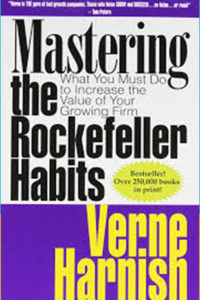
Some of the books that I referenced back to, reread parts of them included The 4-Hour Workweek by Timothy Ferriss. Three things that struck me in particular, the laziness of being busy, Parkinson’s Law and the magic of virtual assistants. Let’s get to the laziness of being busy part. I was within a few pages as I was reading this in bed, I had to put the book down and take a deep breath because I felt like he was talking specifically to me. On page 75, Tim says, “Slow down and remember this. Most things make no difference. Being busy is a form of laziness, lazy thinking and indiscriminate action. Being overwhelmed is often as unproductive as doing nothing and is far more unpleasant. Being selective, doing less is the path of the productive.”
Isn’t that weird, doing less is the path of the productive? He goes on to say, “Focus on the important few and ignore the rest.” Tim Ferriss, by the way, is a huge proponent of the 80/20 principle that 20% of your efforts gets 80% of your results. The key to not feeling rushed is remembering that lack of time is lack of priorities. That was a huge blow to me. I find purpose in staying busy that I’m constantly being productive and when some of the things I’m doing aren’t as productive at all if you compare them against my true personal and professional goals. For example, I spent a few hours cleaning out the garage, but should I be cleaning up the garage for hours at time when I could have been taking my kids to the trampoline park? Instead they were watching TV, maybe playing video games. It would have been more productive long-term to me to have more time with my kids. In my world, yes, my busyness created a situation where I focused more on the task than my children. That, in Tim’s words, is lazy.
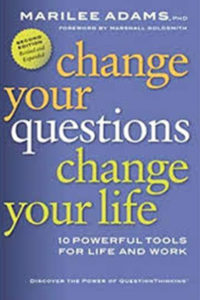
To talk about Parkinson’s Law, if you haven’t heard of him before, he describes it like this. “Parkinson’s Law dictates that a task will swell in perceived importance and complexity in relation to the time allotted for its completion. It is the magic of the imminent deadline. If I give you 24 hours to complete a project, the time pressure forces you to focus on execution and you have no choice but to do only the bare essentials. If I give you a week to complete the task, it’s six days of making a mountain out of a molehill. If I give you two months, heaven forbid, it becomes a mental monster. The end product of the shorter deadline is almost inevitably of equal or higher quality due to greater focus.”
There are two things he recommends that are synergistic approaches for increasing productivity. Number one, limit the tasks to only those that are important in order to shorten the work time or number two, shorten your work time to limit the tasks to which those are important. Ideally he says this, “Identify the few critical tasks that contribute most to income and schedule them with very short and very clear deadlines.”
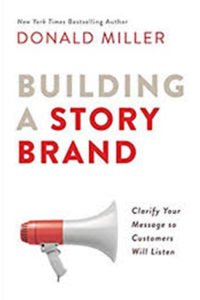
Another way to consider this, and I listened to Tim Ferriss podcast with Gary Keller of Keller Williams. He has also written the book, The One Thing, which I highly recommend. This is Gary Keller talking, “What tasks can you do now such that by doing it, it makes everything else easier or completely unnecessary?” That question alone can help you prioritize them and focus on that thing that is most important for you at any given time. Lastly, the third thing I wanted to mention from The 4-Hour Workweek is that Tim hales the virtues of having a virtual assistant. This was a book written many years ago, but I have two PT owner clients who are using virtual assistants to complete tasks such as creating marketing materials, marketing content, creating Excel spreadsheets, making phone calls to various vendors. Both owners swear by and love their VAs.
There are many categories of payment that you can have with a VA, whether you want to use them ten hours a week, twenty hours a week or even full-time. Both of my clients I believe are using their VAs 10 to 20 hours per week and give them tasks every week to complete rather often. When their per-hour rate comes in at around $10 an hour with no benefits and no HR headaches, the value is immense. Both of them live and die by their VAs. One of the owners in my peer-to-peer PT mastermind group was complaining about creating a spreadsheet for marketing purposes. He was going to have to manually create this Excel spreadsheet with a ton of cut and pasting on data that he was going to generate from his EMR.
He recognized that it was going to be a waste of his time and not too excited about it, but something that he wanted to get. One of the other owners, my friend who has a VA, offered their usage instead. It would probably take her about 2 to 3 hours to complete. My friend jumped at the offer and $40 and a couple of days later, he had this spreadsheet that he needed without taking out his personal time and it’s significantly less cost. If you have tasks that aren’t getting done, whether it’s personal or professional, include your personal stuff in there or content that you don’t want to generate, VAs can be an amazing solution to your problems.
Make a list of your personal professional things that you would have a VA do for you and make it HIPAA compliant, your work with them. Consider throwing everything at them for a month or two trial period and see what you think. My business partner, Will Humphreys, use the VA a number of years ago to do some of his personal stuff and absolutely loved it. He said it was great. He was able to have his VA find great birthday gifts for his wife and also set up a vacation for him and his family. It’s things like that where we consider how a VA can help us loosen up our time.
Rich Dad Poor Dad By Robert Kiyosaki
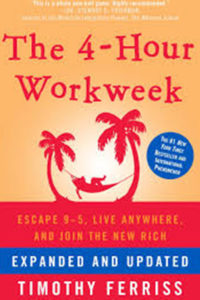
The last book I wanted to reference, and I hope I haven’t taken too much time and I hope this is worth it for you. I want to reference back to Rich Dad, Poor Dad and his Cash Quadrant. If you haven’t read Rich Dad, Poor Dad or Cash Quadrant, the book is square with four boxes within it. In the top left box is E for Employee and the box below is S for Self-employed, the top right box is Business Owner and the bottom right is Investors. Consider where you land in this quadrant. If I were to ask you, “Who here is a business owner?” A lot of us would raise our hands and say, “I’m a business owner. Put me in that box, the business owner, that’s me.” Let me explain to you the definitions of what an employer, employee, self-employed, business owner, investor is and maybe you would reconsider.
An employee is someone who is getting taxed by the government up to 50%. You’re a partner with the government. You’re an employee of somebody else. You don’t have any stake in the business necessarily. You simply exchange hours for money. Self-employed means you own your business, but the business is solely dependent upon you. If you’re not there, the business goes down. That’s it. A business owner is someone who owns a business, but they have the systems and the people in place to run without them for up to a year and still function. That’s Robert Kiyosaki’s definition of a business owner. An investor is someone who is financially intelligent enough to take calculated risks that pay off well and do so with other people’s money. If I were to ask the question again, “Are you a business owner?” Consider where you are in your business, maybe you’re more of an employee or self-employed.
Robert Kiyosaki breaks it off into two-halves. The left side of that box means that you have some security, but you’re also under some bondage to the business. The right half of that box represents where the rich and the wealthy live and have significantly more freedom obviously. The important thing is to know where you are within the box and also what it takes to get to the next level or to move up from employee or self-employed over to business owner, and what it takes to go from business owner to investor. Essentially the one goal for any self-employed person to move from the left side of the box to the right side of the box, which means being a business owner is to develop traditional systems and build your business over time with policies and procedures for the different departments. That’s exactly what it takes to gain the freedom and profits that I’m talking about. He even goes on to mention that in order to make this move, it requires typically either an MBA or mentor of some kind to help you develop these policies and procedures, but pays off in terms of freedom and profits like I mentioned.
That’s my breakdown of the most influential books of 2019 for the Physical Therapy Owner’s Club. If I was to make a shout-out to any other books out there, I started getting into Traction. It’s a great book, but I haven’t completed it yet. I’m on my way to finishing that one. Also, a small book called As A Man Thinketh by James Allen. Both have been cool to read and consider the theories that they are espousing, but they’re going to be huge to my continued development through the year 2020. If you have any recommendations for books that you would like me to read, or if you have any questions on books that you’d like to read, feel free to reach out to me at Nathan@PTOClub.com. I’d be happy to engage with you. I look forward to this next year of 2020 where we can continue to be a resource for you to earn a greater firm and more profits out of your PT business. Thanks for following along with me. I look forward to a great 2020 together.
Important Links:
- Good To Great
- The E-Myth Revisited
- Think and Grow Rich
- Mastering the Rockefeller Habits
- Scaling Up
- Rich Dad Poor Dad
- The 7 Habits Of Highly Successful People
- The Cash Quadrant
- The 4-Hour Workweek
- Building a StoryBrand
- The Coaching Habit
- Change Your Questions, Change Your Life
- Profit First
- Christopher Music – past episode
- Eric Miller – past episode
- The One Thing
- Traction
- As A Man Thinketh
- Nathan@PTOClub.com
Love the show? Subscribe, rate, review, and share!
